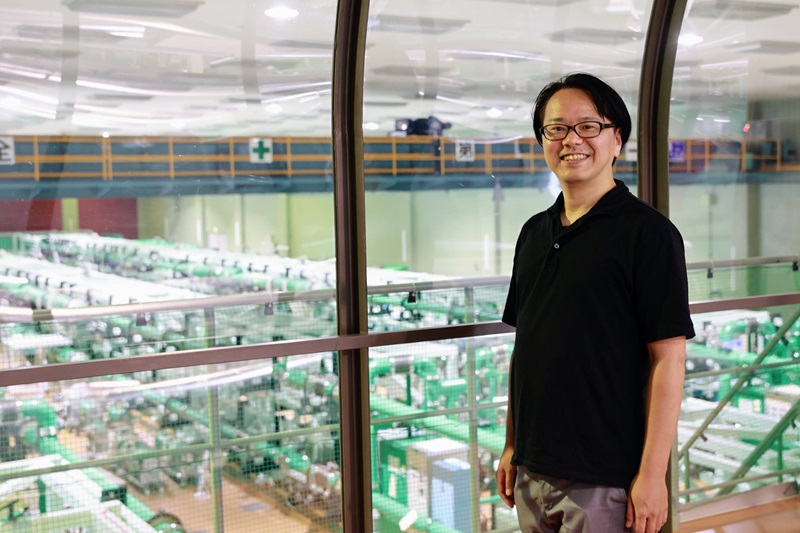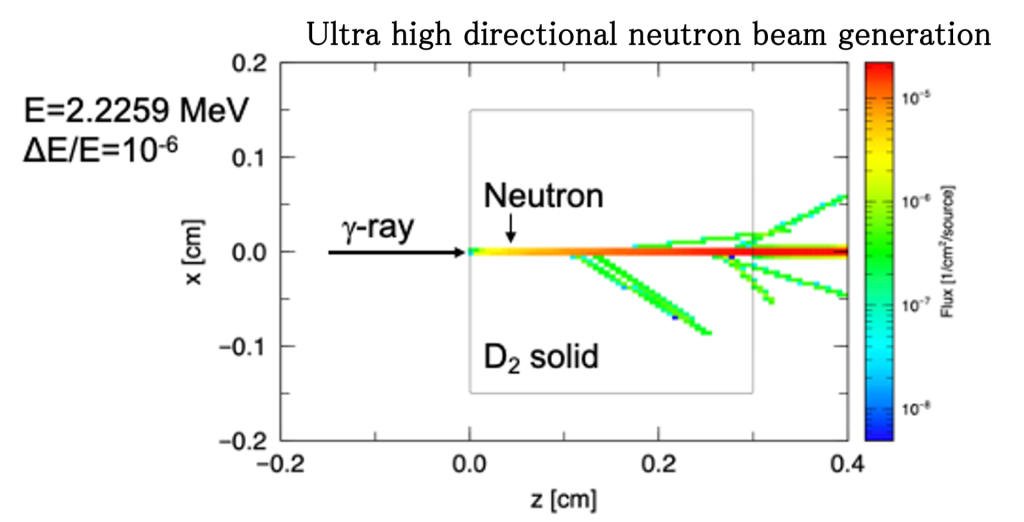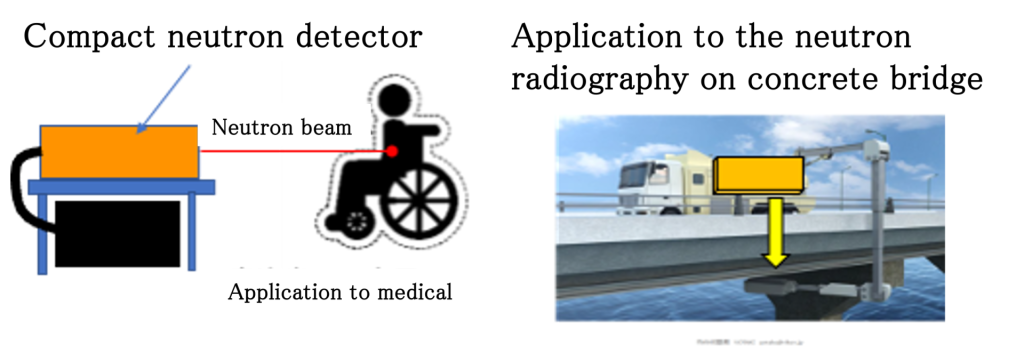Researcher interviews Assoc Prof. Arikawa

Please tell us about your current research.
My current research focuses on developing a new scheme for generating highly directional neutrons, similar to laser beams. I have been working on neutron detectors for laser fusion science since my graduation research in 2007. Recently, I have developed a neutron generator, which has interesting potential applications not only for laser fusion research but also for broader societal uses.
Why did you choose this research theme?
I developed a neutron radiography detector during a JST project called “A-STEP” from 2014 to 2019. This technology inspects damages in highways or concrete buildings as illkustrated in figure 2 right. During the project, we found out that it is difficult to achieve neutron radiography with laser-driven neutron sources because these neutrons are not collimated; they travel in all directions and do not reach the inspection sample effectively. In particular, only 1 in 10 billion neutrons generated can reach to the inspection sample, making neutron radiography uncommon. The conventional approach to improve this problem is to use larger lasers or accelerators to increase number of neutrons as many as possible. My research experience led me to consider the possibility of creating highly directional neutrons, like laser beams, from the generation stage. If neutrons could be made to behave like laser beams, neutron radiography would be dramatically improved. Additionally, numerous new research applications would emerge from this new neutron generation scheme. We expect it to attract significant interest from nuclear physics researchers. Experiments that were previously impossible, such as neutron-neutron collisions and the measurement of magnetic fields using neutrons, would become feasible. In the future, neutron-based cancer therapy (BNCT, illustrated in the figure2 left), which currently requires special facilities with large accelerators, could be performed at small hospitals. BNCT, taking advantage of its high directionality, can kill only cancer cells while protecting surrounding healthy cells from radiation. We believe this scheme will be a promising technology that could change the future.

(Figure 1) Calculation results of the new idea of neutron generation. In the simulation calculation, Neutrons are shown to be generated in a straight line when γ-ray is launched into D2 solid.

(Figure 2) Conceptual view of a compact neutron source under development and its applications in cancer therapy or neutron radiography of the concrete bridge.
What do you find challenging and difficult about your research?
The most challenging issue in this research is the lack of pre-existing instruments to generate such neutrons or gamma rays, which are the source of the neutrons. I have consulted various researchers at The University of Osaka to find the best electron accelerator to realize my concept. I believe such discussions are very important, especially in multidisciplinary research.
Do you have a message for junior researchers who aspire to become researchers?
I encourage young researchers to have fun with their research. Research often does not go well right away, but if you continue with your research while enjoying it—much like how you were absorbed in hobbies, sports, or music as a child—you can learn from failures. If you persist without giving up, you will eventually succeed.
